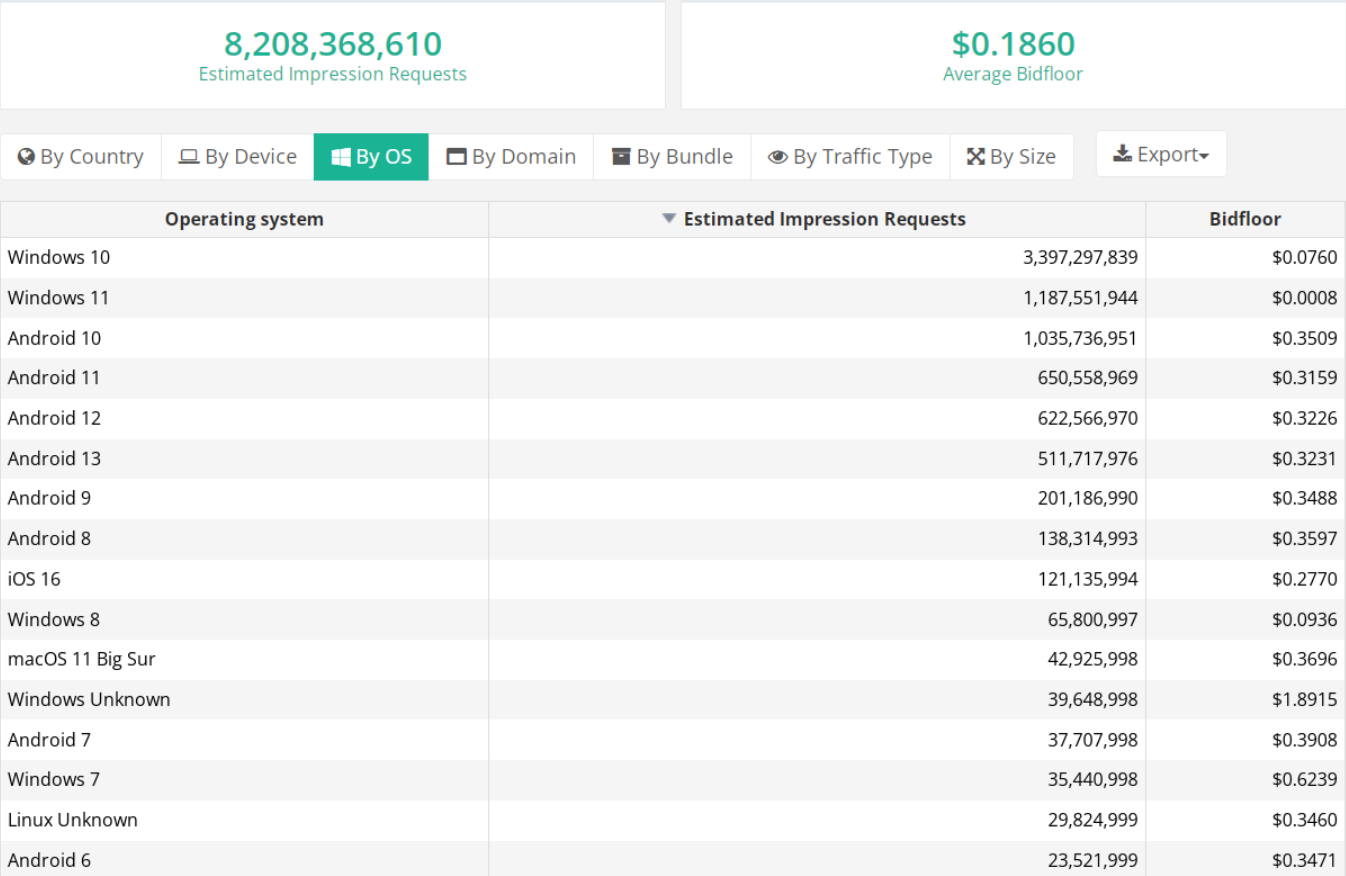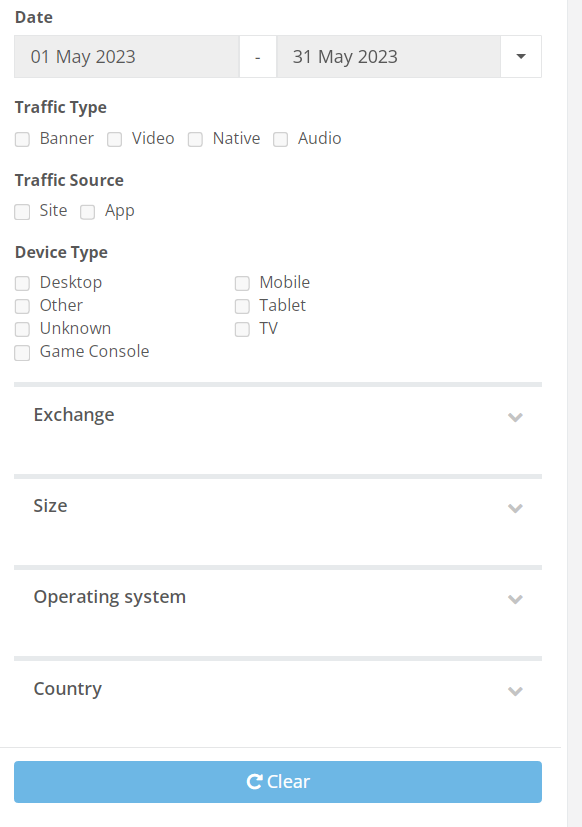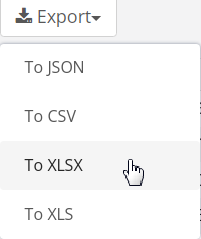Here is another New Features Bulletin with some notable additions to the Adkernel White-Label RTB Exchange Suite and the DSP Suite. For any specific questions or inquiries for new client sales, please use support [at] adkernel.com
DSP Suite
- Media Planner Integration:
- The DSP Suite now includes a Media Planner tool, enabling users to effectively plan and manage their media campaigns.
- Win Metrics Enhancement:
- Upcoming feature: Win Metrics will be introduced to track and measure campaign performance. Graphical representations will be added to provide visual insights into the metrics.
- New Rotation Modes for Creatives:
- Introducing new rotation modes for ad creatives, including weighted percentage, conversion rate-based, click-through rate (CTR)-based, and random rotation.
- Video/Audio Ads Skipability & Universal AdID:
- Users can now specify whether video and audio ads can be skipped by viewers. Additionally, Universal AdID support has been implemented for streamlined ad identification.
- AdTitle in VAST for Video Creatives:
- The VAST format now supports the inclusion of AdTitle for video creatives, allowing for better categorization and management of ads.
- Assets Library:
- A centralized library for storing and managing campaign assets has been implemented, providing easy access and organization of creative elements.
- Companion Banners for Video/Audio Creatives:
- Users can now associate companion banners with video and audio creatives, enhancing the overall ad experience and engagement.
- Campaign Currency Support:
- The DSP Suite now supports multiple currencies, including USD, EUR, TRY, AUD, IDR, JPY, and THB, enabling international campaign management.
RTB Suite
- Click Filtering Disabling Options:
- Users now have the ability to disable click filtering at the exchange level, providing more flexibility in handling click data. Options include FILTERED_BOT, FILTERED_AD_SCANNER, IP_BLACKLISTED, and FILTERED_NO_WIN.
- Multiple MediaFiles in VAST Support:
- The RTB Suite now supports multiple MediaFiles within VAST, enabling more diverse and dynamic video ad formats.
- Native Video Asset Support:
- Native video assets are now supported, allowing users to seamlessly integrate video content into various ad formats.
- Bid Response App Bundle Support:
- App bundles in bid responses are now supported, enabling more precise targeting and optimization for campaigns.
- Non-Clickable Ads Support for ADX Campaigns:
- Users can now configure ADX campaigns to allow non-clickable ads, providing flexibility in ad formats and objectives.
- Bidswitch Exchange Type
- Pretargeting Group ID Targeting: Bidswitch pretargeting group ID targeting is now supported, enhancing targeting capabilities for specific audience segments.
- New Optimization Mode: Minimized Bid:
- A new optimization mode, “minimized bid,” has been introduced, allowing users to prioritize minimizing the bid amount for efficient budget allocation.
- OTT Bundle Types Support:
- The RTB Suite now supports various OTT bundle types, enabling targeted advertising on over-the-top platforms.
- TagID and State Factors in Auto-Optimization Robot:
- The auto-optimization robot now takes into account TagID and state factors, resulting in more intelligent and effective campaign optimization.
- CTV User Agents Library Update:
- The CTV user agents library has been updated to accommodate the latest devices and platforms, ensuring accurate targeting and delivery.
- Creative-Level Apps/Sites Targeting:
- Users can now target specific apps or sites at the creative level, allowing for more granular control over ad placements.
- Ad Markup Preview Tool:
- Adkernel has introduced the Ad Markup Preview tool, which provides a preview of ad creatives using a specific AdMarkup URL, facilitating ad quality assurance and troubleshooting.
- New Browser Type – Podcast App:
- A new browser type, “Podcast App,” has been added to the RTB Suite, enabling targeted advertising within podcast applications.
- New Browser Types and Device Type:
- New browser types, including HUAWEI_BROWSER and HULU_APP, have been added for enhanced targeting capabilities. Additionally, a new device type, VR, has been introduced.
- Smart Spending Bid Adjustment:
- A new bid adjustment feature, “Smart Spending,” has been implemented, allowing for optimized bidding strategies based on specific campaign objectives.
- Viewability Tracking:
- Network and exchange level settings now include viewability tracking, enabling advertisers to monitor and optimize ad viewability metrics.
- Fixed CPM Margin Bid Mode on Campaign Level:
- A fixed CPM margin bid mode has been introduced at the campaign level, ensuring consistent margin calculations for cost-per-thousand impressions (CPM) bids.
- UI Feature for TagID Presets:
- Users can now utilize UI features to manage and configure TagID presets, simplifying the process of creating and applying preset configurations.
- Creatives Grid UI Enhancements:
- The creatives grid UI has been improved to include an inline destination URL field and the ability to perform bulk status changes, streamlining creative management and updates.
- Stats Login and Password Generator for Exchanges UI:
- The RTB Suite now provides a login and password generator for exchanges, making it easier to manage and secure access to statistical data.
Note: Some features mentioned may still be in development and not fully available in the user interface (UI). Please refer to the official documentation or contact support for more information and assistance. For more, please contact support [at] adkernel.com



